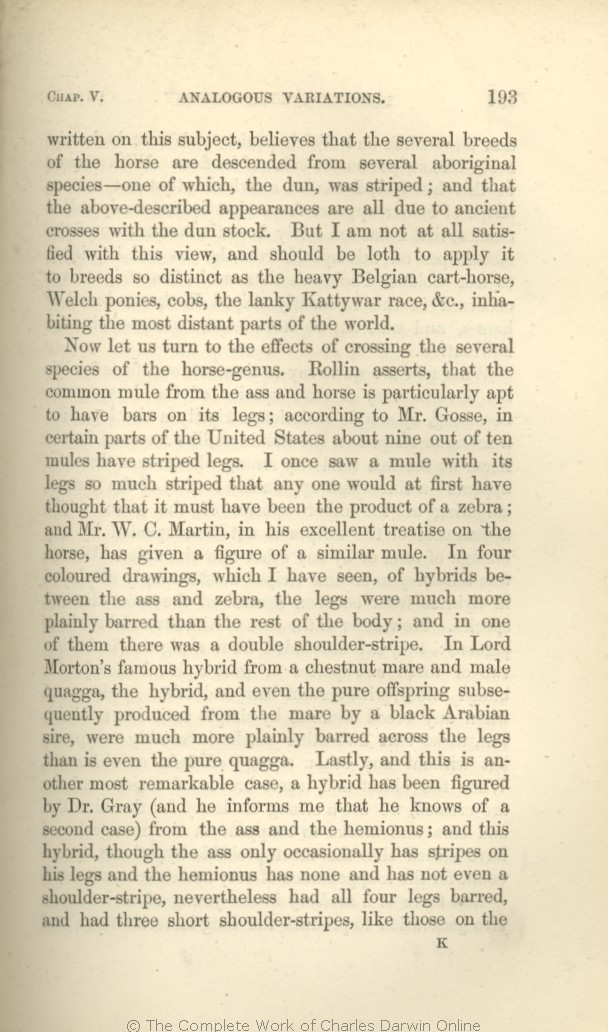written on this subject, believes that the several breeds of the horse
are | are 1866 1869 1872 | | have 1859 1860 1861 |
| species — 1866 1869 | | species— 1859 1860 1861 1872 |
| I am not at all satisfied with this view, and should be loth to apply it to breeds so distinct as 1866 |
| I am not at all satisfied with this theory, and should be loth to apply it to breeds so distinct as 1859 1860 1861 |
| this view may be safely rejected; for it is highly improbable that 1869 |
| this view may be safely rejected, for it is highly improbable that 1872 |
| Welch 1859 1860 1861 1866 1869 | | Welsh 1872 |
| cobs, 1859 1860 1861 1866 1869 | | Norwegian cobs, 1872 |
| race,&c., 1866 | | race, &c., 1859 1860 1861 1869 1872 |
| world. 1859 1860 1861 1866 |
| world, should all have been crossed with one supposed aboriginal stock. 1869 1872 |
|
|
Now let us turn to the effects of crossing the several species of the horse-genus. Rollin asserts, that the common mule from the ass and horse is particularly apt to have bars on its
legs; according to Mr. Gosse, in certain parts of the United States about nine out of ten mules have striped legs. | legs; according to Mr. Gosse, in certain parts of the United States about nine out of ten mules have striped legs. 1866 1869 1872 |
| legs. 1859 |
| legs: according to Mr. Gosse, in certain parts of the United States about nine out of ten mules have striped legs. 1860 1861 |
| would at first 1860 1861 1866 |
| at first would 1859 |
| might 1869 1872 |
| though 1866 | | thought 1859 1860 1861 1869 1872 |
| must have been the product of a zebra; 1859 1860 1861 1866 |
| was a hybrid-zebra; 1869 1872 |
| c. 1859 1860 1861 1866 1869 | | C. 1872 |
| Morton's 1860 1861 1866 1872 | | Moreton's 1859 | | Mortons 1869 |
| mare 1859 1860 1861 1866 1869 | | same mare 1872 |
| only occasionally 1866 1869 1872 | | seldom 1859 1860 1861 |
| his 1860 1861 1866 1869 1872 | | its 1859 |
|









